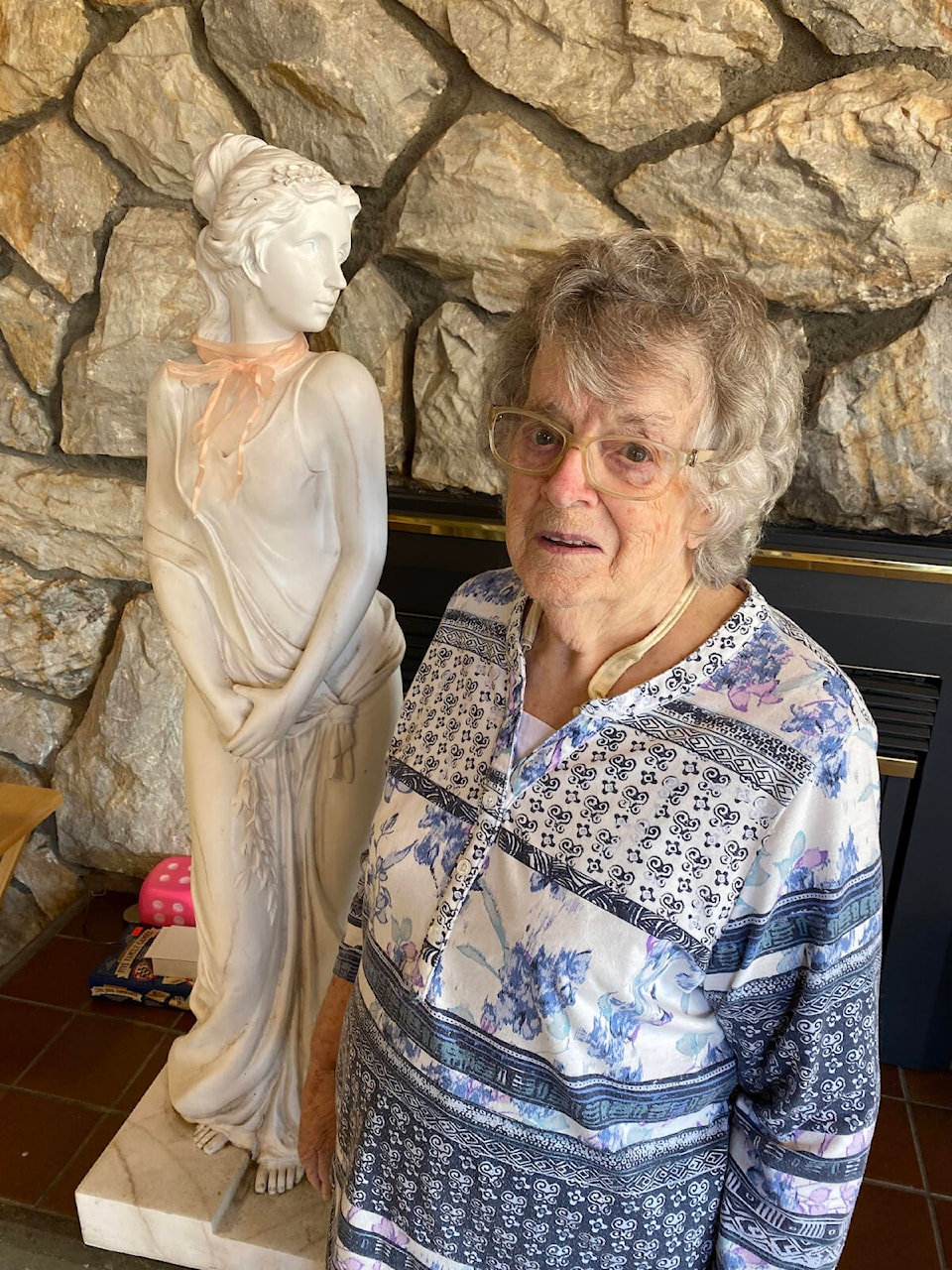By ORLANDO DELANO
Special to the AV News
When we ask people who have lived in the Alberni Valley for several years about the physical changes the Valley has experienced, they can surely tell us about important renovations this area has gone through.
One of those longtime citizens is Pat Rogers, who has lived here for several decades.
Born in Shelton, Washington, Rogers and her family moved to Nanaimo where they lived for seven years with her grandparents. They later went to Trail for one year, and returned to Nanaimo for another year before making their way to Port Alberni by train in 1939.
“We came by train from Nanaimo. I think the ride here took over three hours,” recalled Rogers. “My stepfather, who was already here, picked us up from the train terminal at the old station on Kingsway.” She added that unlike today’s one-hour car ride, in those days a train trip to Nanaimo meant to be in that city for more than a day.
Once in Port Alberni, Rogers’ stepfather rented a three-room house on Redford Street,which the family occupied for the next three years.
Being of school age, young Rogers was enrolled at Eighth Avenue School. “To get to my school every day I had to walk from Redford Street all the way to Eighth Avenue and, since at that time there was no street on what it is now 10th Avenue, I had to walk through a gully and climb the “Golden Stairs”, (close to what is) known today as the 10th Avenue ‘dip.’ I did this daily routine walk for five years.”
Then her family built and moved to a house right on Eighth Avenue, but since Eighth Avenue School had up to Grade 8 only, Rogers completed the rest of her schooling at Redford School. This change meant that she had to do daily walks back north this time.
Uptown Port Alberni was a busy place in those days, as most businesses were located in that area. The streets were not paved like today but built with gravel and dirt. “As the town grew, they started putting wooden sidewalks and paving the streets. I also recall that when they opened 10th Avenue, they built a bridge on the area we now call the dip’ so you could travel straight, without going up and down the gully. By the way, there was also a train track on 10th Avenue which was used by the logging companies to haul the logs down to the waterfront.”
As a teenager, Rogers’ first job was at the Hudson Bay Store building at Third Avenue and Argyle Street. She worked there as a part-time clerk for six months, which was followed by another job at the West Coast Bakery, owned by Mr. Cornish on Argyle, closed to Second Avenue. (There were two bakeries in town those days.)
“I did the baking deliveries to homes and businesses for five years,” she said. It was in those days when the local stores started opening on Friday nights.
Rogers reminisced about several other city landmarks no longer in existence. One of them was the old post office brick building located on Third Avenue and Angus Street. “People used to go to the building, not only to get or deliver their mail or parcels, but many times to sit and socialize. I still wonder why such a beautiful building was demolished!”.
For decades many Port Albernians enjoyed their weekends by attending dances at the Nordley Centre and the original Alberni Athletic Hall. “We also had special dances, like the New Year’s Eve, at the Greenwood Hall on Beaver Creek with live music conducted by popular Ray Phillips, the band leader.”
Glenwood Centre on Vimy Street, which has been used as a roller skating arena and a place for a number of other sport and recreational activities for several decades, was originally built as an Army Cadet drill hall, Rogers remembered. “Several years ago, that area of town, by the Fall Fairgrounds, was basically isolated from the rest of Port Alberni: there was no ADSS school, Bob Dailey Stadium, North Island College, soccer and baseball fields, Athletic Hall, or Multiplex Arena. So much different!”
As we talk about Glenwood Centre and skating, two things came to her memory: two of her children worked at that arena more than 50 years ago. The other is that there was a roller skating rink on Third Avenue, above Ralph’s Men’s Wear. “I used to go roller skating there, although it was a smaller rink,” she said.
“I’ve seen many changes in our city throughout the years, not only people moving out in search of working opportunities and lots of newcomers making the Valley their home, but also the construction of so many new buildings and housing developments, roads, as well as the increase of new businesses and recreational facilities.”
Orlando Delano writes the monthly Valley Seniors column for and about seniors. Do you have an idea for someone to be featured? Contact editor Susie Quinn at editor@albernivalleynews.com.
